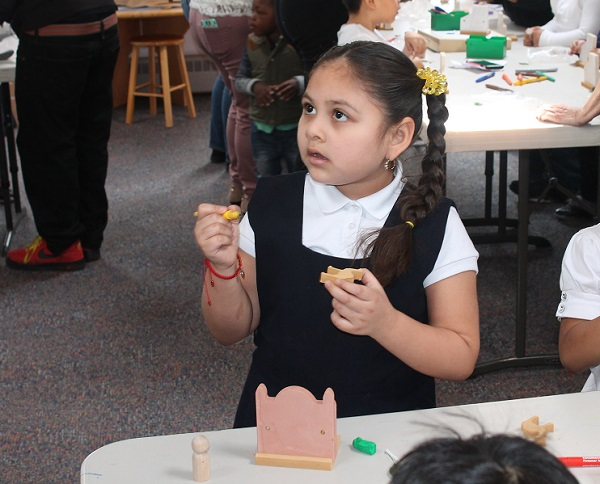Welcoming Every Child
At the Connecticut Children's Museum, accessibility for every child is the highest priority.
 |
| After listening to a story, children work on a related craft project. Photo Credit Matthew Higbee |
Note: The profile below was published in 2016. Connecticut Children's Museum Founder and Director Sandra Malmquist passed away on Aug. 9, 2021. Read her obituary published by The New Haven Independent.
The Connecticut Children's Museum makes accessibility, in the broadest sense of the term, its highest priority. The exhibit rooms are designed to stimulate the unique interests and abilities of every child. There is a music room, a nature room with a glass enclosed beehive, a room with puzzles and logic games, rooms for reading and rooms for playing make believe.
Physically, the museum makes a special effort to accommodate children with special needs. All furnishings are compliant with American with Disabilities Act standards for children and all signs are duplicated in braille.
In addition, children of various backgrounds and income levels are brought to the museum on field trips, opportunities created through partnerships with schools and early childhood programs.
"What is most important for us is that every child can come here, and that we are ready for them when they come," said Director Sandra Malmquist.
The museum is open to the general public on Friday and Saturday afternoons from noon to 5 p.m. The building is also home to the Creating Kids Childcare Center, and offers training to daycare and early childhood educators.
On most weekdays, the museum rooms are filled with continuous stream of young children on field trips from Greater New Haven schools. In addition to giving the boys and girls time to explore the exhibits, the programming typically includes a story time that is connected to a hands-on project. Each child also goes home with a book, part of the museum's mission of helping families build home libraries.
"If kids need books in their homes to be competent readers, then let's give them books for their homes," Malmquist said. "It doesn't need to be more complicated than that."
The museum even has its own braille machine to make books for the visually impaired, both for its own students and for other schools around the state. The first blind student to attend Creating Kids recently graduated from New Haven's Wilbur Cross High School and is now enrolled at Southern Connecticut State University.
"She taught us an incredible amount," Malmquist said.
A longtime early childhood educator, Malmquist started Creating Kids in 1994 before moving to the current space in 1999. The Connecticut Children's Museum opened officially opened in 2001. Since its founding, the museum and its programs have received financial support from many sources, including the Henry E. & Nancy Bartels Fund for Education, the Renee B. Fisher Foundation Fund and unrestricted funds at The Community Foundation for Greater New Haven.
Did You Know?
Children who participate in high quality early childcare programs are less likely to be retained in school, less likely to need special education services, and more likely to graduate from high school.
Source: Susan H. Landry, "Effective Early Childhood Programs," The University of Texas Health Science Center at Houston (2005).
Make a donation
